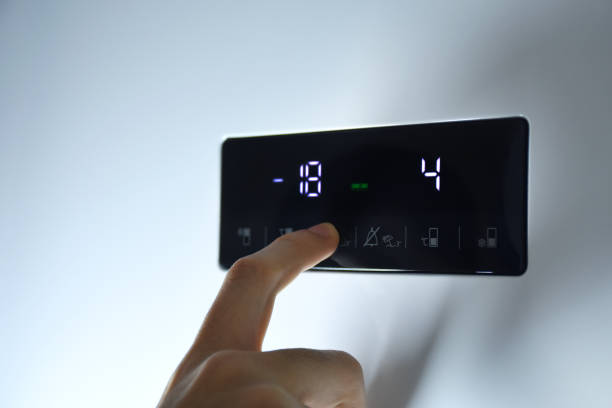
A GE freezer temperature sensor is a variable resistor that changes its resistance depending on the temperature. It sends a signal to the main control board, which adjusts the cooling system to maintain the desired temperature in the freezer.
A GE freezer temperature sensor is part of the thermistor family, which are devices that measure temperature by their electrical resistance. The higher the temperature, the lower the resistance, and vice versa. The sensor is attached to a wire harness that connects it to the main control board on the back of the refrigerator.
The main control board monitors the signal from the sensor and compares it to the set temperature for the freezer. If the sensor detects that the freezer is too warm or too cold, it tells the control board to activate or deactivate the compressor, fan, and defrost system accordingly.
The sensor helps to keep the freezer at a consistent temperature, which prevents food spoilage, ice buildup, and energy waste. It also helps to prevent problems like freezer burn, frostbite, and freezer won’t defrost.
If you suspect that your GE freezer temperature sensor is faulty, you can test it with a multimeter. A multimeter is a device that measures voltage, current, and resistance. You can buy one online or at a hardware store.
To test the sensor, you’ll need to access it by removing the back panel of the freezer. You’ll also need to unplug the refrigerator first for safety reasons. Then, follow these steps:
If you need to replace your GE freezer temperature sensor, you can order a new one online or from an appliance parts store. The part number for most GE models is WR55X10025. You’ll also need some basic tools like a ¼ inch nut driver, wire crimper and strippers, and wire splice connectors.
To replace the sensor, follow these steps:

Q: How do I know if my GE freezer temperature sensor is bad?
A: Some signs that your GE freezer temperature sensor is bad are:
Q: How do I adjust the temperature of my GE freezer?
A: To adjust the temperature of your GE freezer, you can use the temperature control knob or buttons inside the refrigerator compartment. Depending on your model, you may have a digital display or an analog dial that shows numbers or letters. Refer to your owner’s manual for more details on how to set your desired temperature.
Q: What is Z-Wave technology and how does it relate to my GE freezer?
A: Z-Wave technology is a wireless communication protocol that allows smart devices to communicate with each other and with a central hub or controller. You can use Z-Wave technology to monitor and control your GE freezer remotely using your smartphone or smart home device. For example, you can get a freezer alarm if the temperature drops drastically, or you can adjust the temperature from anywhere. To use Z-Wave technology, you’ll need a compatible GE freezer, a Z-Wave hub or controller, and a Z-Wave temperature sensor.
A GE freezer temperature sensor is an important component that helps to keep your food frozen and safe. It measures the temperature of the freezer and sends a signal to the main control board, which adjusts the cooling system accordingly. If your sensor fails, you can test it with a multimeter and replace it with a new one. You can also use Z-Wave technology to monitor and control your freezer remotely.
